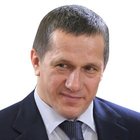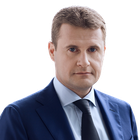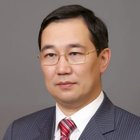The exhibition the President toured features stands showcasing several innovative projects, such as the Sciberia AI-based medical image analyser, the Horus monitoring system for aircraft engines, the iLii Games video games development studio, and the Tundra animation studio.
The President was also presented the master plan for the development of the Yakutsk agglomeration until 2030. This document was designed according to the President’s instructions following a nationwide contest and includes 30 measures, with over 50 percent of the cost to be covered by the region and private investors.
Separately, the President was informed about the training of snipers and unmanned aerial vehicle (UAV) operators for the special military operation. Heroes of Russia Alexander Kolesov and Yaroslav Yakubov showed the President Yakutia’s Sulun shooting range, which has a maximum shooting distance of up to four kilometres.
Vladimir Putin was shown various models of UAVs, FPV drones, unmanned aerial systems, as well as uniform items produced at enterprises in the Far Eastern Federal District.
The President was also briefed on the operation of the Patrioticheskaya priority development territory, which was created in the Far East to encourage the production of various items for the special military operation.
During his tour around the creative cluster, Vladimir Putin was accompanied by Deputy Prime Minister – Plenipotentiary Presidential Envoy to the Far Eastern Federal District Yury Trutnev, Minister for the Development of the Russian Far East and the Arctic Alexei Chekunkov, and Head of the Republic of Sakha (Yakutia) Aisen Nikolayev.
* * *
The Kvartal Truda (Labour Quarter) project is aimed at supporting businesses that produce films, animation, media, digital content, and design. This is the first creative cluster in Russia with the preferential regime of a priority development territory. Currently, there are 128 residents in the cluster.
The cluster was created on the territory of an abandoned meat processing plant and opened in November 2022. Funding for the project amounted to about 1.3 billion rubles (613 million from the federal budget and 671 million from the regional budget).



















